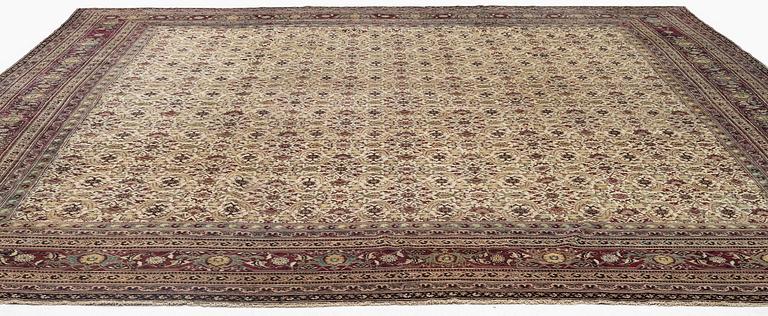An antique Agra carpet, north India c. 430 x 392 cm.
Around 1890. An ivory ground with a large polychrome herati pattern. Wine red main border with a palmette vine.
Some occasional harder wear, somewhat dirty, stains (of which several are stiff). The sides with creases from use.
Tuontiarvonlisävero
Tuontiarvonlisävero (12%) tullaan veloittamaan tämän esineen vasarahinnasta. Lisätietoja saat soittamalla Ruotsin asiakaspalvelumme numeroon +46 8-614 08 00.
Muut tiedot
During the 19th century, the British Empire grew into one of the largest in history. The 1851 London exhibition (The great exhibition) showed the waste areas of the new empire and several carpets from India was on display. This resulted in a great demand for carpets from Agra.
In 1862 several prison manufactories were established. Weaving studios were established in the Indian prisons where the prisoners were forced to weave carpets as part of their punishment. The prisoners were always instructed by a master weaver. The quality of these carpets is very high. Inspiration was drawn from ancient Anatolian carpets (just like the present carpet) as well as the classic Persian and Mughal carpets from the 16th and 17th centuries.
The most famous of these weaving studios was Agra Jail, near the Taj Mahal, where a huge carpet was woven and placed in the Waterloo Chamber of Windsor Castle. It was presented as a gift to Queen Victoria in 1877 on the occasion of her Imperial Durbar.





















































